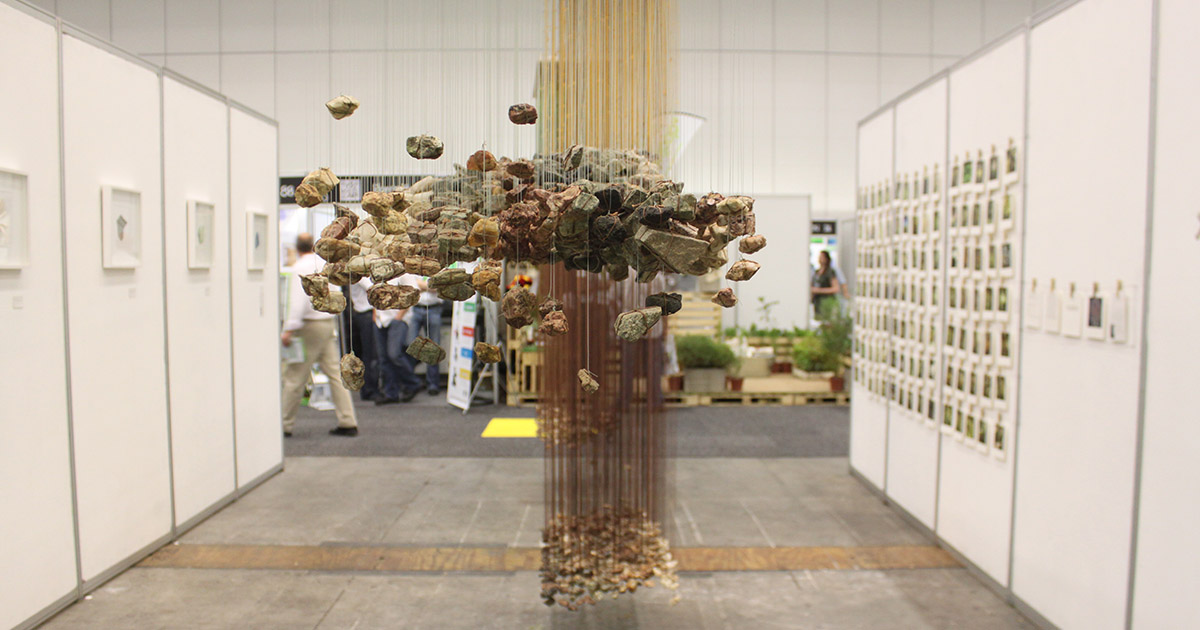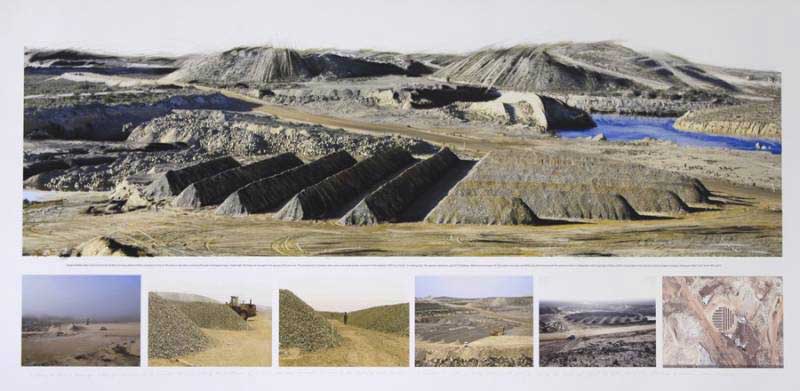WASTE ART and FOUND OBJECT ASSEMBLAGE
As mentioned in part 1, artists, designers, and craftspeople are increasingly using discarded, found, and waste materials, to create exciting new artworks and functional pieces. Plastic bottles, spoons, and food packaging can serve as a base material for sculptures, while wrappers and other paper waste can be transformed into collages. Plastic bags and foil packets are used to create yarn for crochet work, and bottle caps are strung and wired together, to create interesting, visually-appealing images and shapes. When combined with a fine art aesthetic and conceptual depth, things we consider to be “waste” can truly be transformed into valuable and pleasing pieces of art.
In 2006, a project entitled “Waste at Work” focused on paper waste-reduction and minimization. Artists, including Lien Botha and Nandipha Mntambo, were paired with participating companies, and artworks, or art installations, were created by using the company's discarded paper as the departure point, concept, and material.
INSTALLATION ART
“Installation Art” that forms part of "Green Art", or the environmental movement, often makes use of discarded items, as mentioned above, but could also focus on creating an environment, or natural constructed space. Whether this environment is created outdoors, or in a gallery space, the aim is to create a space that the viewer can experience and interact with, in order to create new understanding, or to raise certain questions about what we experience around us. An example of this could be to create a fantasy forest in a small room, by using a variety of plants, branches, leaves and sand/soil, enhanced by sound recordings from a forest. South African artist Stefanie Schoeman's installation artworks often involve suspending collections from her travels. Her "Maanlandskap" is a reconstruction of a desert landscape, incorporating small rocks of similar sizes, collected in Namibia.

'Maanlandskap', by Stephanie Schoeman, Found stones collected in the Moon Landscape outside Swakopmund, Namibia. 2012. 1 x 3 x 2m.
LAND ART
The term “Land Art” is used to represent what many also refer as “environmental art” or “earth works”. This demotes site-specific work, in which the artist’s materials include elements of nature, such as sand, water, wood and rocks - mostly found on-site - to accentuate, change, or complement the landscape.
“Land art does not attempt to represent the landscape; the landscape becomes the very means of creation”. Elaine Meyer (2008)
Land art originated from the ecology movement in the United States of America, in the 1960s. The movement was initiated in reaction to increased concern about pollution, the depletion of natural resources, and toxic waste (Kleiner et al, 2001:1099), and also as a departure from making formal objects, situated in a gallery setting. Land art is usually executed and sited in remote areas that are not easily accessible to the public.
One of land art’s main premises is that no permanent mark, or impact, is left on the natural environment. Installations, drawings and photographic prints are some of the primary ways to document the creative process and final product, in land art. Viewing of the work by the public is usually via photographs of the completed piece, coupled with footage of its construction.
“I think the urban dweller has an increasing need to connect with nature and the land artist can play an important role in forming a cityscape that enables people to live a more balanced life.”
- Strijdom van der Merwe (Meyer, 2008)
A study by Elaine Matthews at Rhodes University, entitled 'Environmental art and its contribution to establishing an awareness of the sacred in nature', focuses on how land art impacts on the attitudes and philosophies of people, who subsequently realise their own relation to the natural world, and develop a sacred, creative attitude to ecology (Matthews, 2000).
NEW MEDIA and EXPERIMENTAL ART
Performance art and the creation of happenings have been used to explore notions about identity, human experience or existence, and various other themes and concepts. Recently, many artists have started using performance art as a type of protest art and activism, to fight the abuse of resources and environmental degradation through human industry. Performance art and happenings that invite audience participation are also being used to inspire involvement amongst viewers - not only with the artwork itself, but with nature and concepts around the environment - as well as encouraging viewers to experience nature on a more authentic level, by reconnecting and re-establishing their own relationships with nature, or “outside” our built-up spaces.
This article is not comprehensive, but rather an introduction to some forms of Green Art. The definition of Green Art constantly evolves and grows, just as much as the artists involved with environmental-, green- or eco-awareness are finding new ways to create, express and inspire.
 'am/pm Shadow Lines', by Strijdom van der Merwe ,7000 tons of earth-moving, 100 metres in diameter, One metre high, Done for De Beers Namaqualand mines, West Coast South Africa, as a land rehabilitation artwork.
'am/pm Shadow Lines', by Strijdom van der Merwe ,7000 tons of earth-moving, 100 metres in diameter, One metre high, Done for De Beers Namaqualand mines, West Coast South Africa, as a land rehabilitation artwork.
LIST OF REFERENCES:
- BANNISTER, S. http://simontothemax.blogspot.com/2012/08/what-do-you-think-of-green-art.html
- KLEINER, F.S., MAMIYA, C.J., & TANSEY, R.G. 2001. Gardner’s Art through the Ages. 11th ed. FL: Harcourt.
- MATTHEWS, E. K. S. 2000. Environmental art and its contribution to establishing an awareness of the sacred in nature. MFA thesis. Rhodes University.
- MEYER, E. 2008. The Land as Art. Urban Green File, 13(1).
- VAN DER MERWE, S. 2005. Sculpting the Land. Pretoria: Protea Book House.

